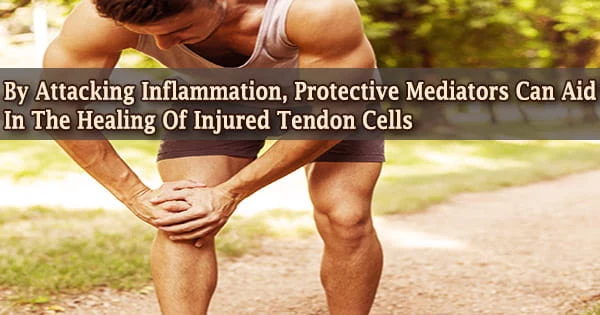Tendon tears of the rotator cuff and Achilles heel are common injuries, particularly among the elderly. They are painful and disabling, and they can have a negative impact on one’s quality of life. To aid patients with persistent tendon injuries, new approaches are needed.
A new study published by Elsevier in The American Journal of Pathology identified mediators that promote inflammation resolution as prospective new treatments for pushing chronically injured tendons down an inflammation-resolution route.
“Our study informs new therapeutic approaches that target diseased cells and promote resolution of tendon inflammation, harnessing the body’s own natural responses for therapeutic gain,” explained Stephanie G. Dakin, Ph.D., BVetMed, Nuffield Department of Orthopaedics, Rheumatology and Musculoskeletal Sciences, Botnar Research Center, University of Oxford, Nuffield Orthopaedic Centre, Oxford, UK.
The study shows that two specific proresolving mediators (SPMs), lipoxin B4 (LXB4) and Resolvin E1 (RvE1), have anti-inflammatory effects in cultured tendon cells with induced shoulder tendon disease.
Dr. Dakin and colleagues claim that resident (i.e., part of the normal tissue) stromal cells, particularly fibroblasts, play a key role in inflammatory joint disorders. Fibroblasts get activated and demonstrate inflammation “memory” after an injury, which is a key event in the transition from acute to chronic inflammation.
These cells can no longer revert to their original state. The researchers discovered SPMs that interfere with this chronic inflammatory process and aid fibroblasts in tendon inflammation resolution, hence the moniker “proresolving” mediators.
Undurti N Das, MD, DSc, UND Life Sciences, Battle Ground, WA, USA, and BioScience Research Center and Department of Medicine, GVP Medical College and Hospital, Visakhapatnam, India, commented on the study, emphasizing the importance of understanding the crosstalk among resident stromal cells, such as fibroblasts; tissue-resident and infiltrating macrophages, infiltrating immune cells, and endothelial cells are vital to the illness process and the development of newer therapeutic treatments, as well as in the transition from acute to chronic inflammation.
There is a clear unmet clinical need to develop effective new therapeutic approaches to treat tendon disease. SPMs, including LXB4 and RvE1, may target diseased cells and potentiate resolution of chronic tendon inflammation.
Dr. Dakin
“In this context, the report by Dakin et al is of substantial interest to the field. It establishes that tendon stromal cells isolated from patients with tendon tears show pro-inflammatory phenotype and secrete significantly higher amounts of interleukin (IL)-6 with dysregulated production and action of lipoxin A4, resolvins, protectins, and maresins compared to normal cells,” added Dr. Das.
“There is a clear unmet clinical need to develop effective new therapeutic approaches to treat tendon disease,” added Dr. Dakin. “SPMs, including LXB4 and RvE1, may target diseased cells and potentiate resolution of chronic tendon inflammation.”
Shoulder pain is the third most prevalent cause of musculoskeletal pain, and rotator cuff tendon tears account for a significant percentage of this illness burden. Physical therapy, nonsteroidal anti-inflammatory medications, platelet-rich plasma, steroid injections, and surgery to repair damaged tendons are some of the current treatments for tendon injuries.
These treatments are frequently useless, steroids can be dangerous, and tendon tear surgery has a high chance of postoperative failure. Alternative medicines that target the cells that cause chronic inflammation are needed to aid patients while avoiding some of the drawbacks of surgery, steroids, NSAIDS, and other procedures.





